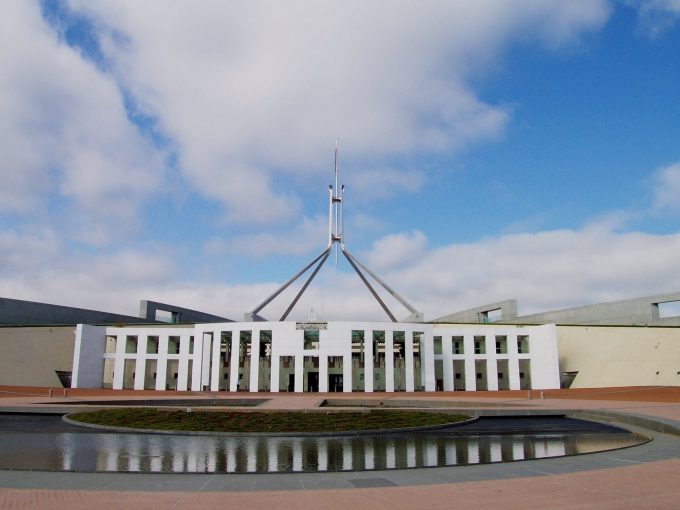We have to move the housing conversation beyond a game of political football about negative-gearing winners and losers. Australia needs a bipartisan, long-term, housing policy.
Originally published on The Conversation – 15 June 2016
Authors: Ralph Horne and David Adamson
Why? Because we have a slow-burn, deepening crisis that is affecting Australians who are already highly vulnerable and disadvantaged. They include:
- 206,000 households on the waiting lists for social housing;
- 46% of those with greatest needs wait two years or more; and
- 105,000 were designated homeless in the 2011 Census.
The UN Rapporteur on Human Rights, following a visit in 2007, concluded that Australia was failing to deliver the fundamental human right of adequate housing because of the lack of any co-ordinated national strategy. Nothing has changed since 2007.
A failure to join the dots of housing policy
Our cities will stop working if we do not do something. A decent long-term housing policy is not just about the million or so Australians who are in housing need, marginal housing or homeless. In reality, housing demand and supply for all tenures is intricately connected.
Failed first-time buyers rent privately, increasing demand and rent levels. This pushes lower-income families towards social housing waiting lists and, at the end of the queue, those on marginal incomes are more likely to experience homelessness. Investors push out would-be home buyers by leveraging generous tax breaks that are not available to renters who are saving up to buy.
Rental affordability is worsening, including for key workers in our cities. First-time buyers are having difficulty entering an overheated market. We face the prospect of a permanent “generation rent”.
More than 40% of people in private rental pay more than 30% of their income for housing – and this is after taking into account Commonwealth Rent Assistance. The 30% threshold is generally recognised as the level at which financial stress is experienced.
While states and territories have a wealth of experience and a clear role in delivery, the fact is the Commonwealth government must take a leadership role in co-ordinating national housing policy and connected programs across the four sectors of our housing system: home ownership; affordable private rental; social housing; and specific housing for Aboriginal, disability and homelessness needs.
It can be done; it has been done before. In 1945, Australia also faced a housing crisis. Despite skills and materials shortages and the financial difficulties of the post-war economy, the Commonwealth built 670,000 homes in ten years.
Decent housing underpins jobs, growth and productivity. Well-located, affordable housing is critical for preventative health, to provide a stable home environment for education and self-confidence, and for a productive workforce.
We need a national program of home building to meet the shortfall in all forms of housing. While this will not in itself resolve all problems, it is critical to a successful housing policy.
How much will it cost and where’s the money?
This is the subject of a new research report, Towards a National Housing Strategy, by Compass Housing working with a group of peak bodies, housing academics and community housing providers.
To get the long-term benefits of decent housing, we must recognise that providing this has an up-front cost and we are in a tight fiscal environment. The Ache for Home Report estimates a A$10 billion housing bond could meet the needs of the 100,000 currently homeless people. Across all tenures, Australia could build 500,000 homes in ten years for an annual investment of $12.5 billion.
Even if the Commonwealth government took full responsibility for funding a national building program of such scale, the annual investment would equate to less than one-fifth of the current annual cost of capital gains (CGT) exemption on the main residence. The bonus of investment on such a scale could be the boost to the wider economy in which each $1 spent on construction created a $1.30 gain.
A national housing strategy would need to do two key things to raise the cash needed:
- rebalance current tax settings to redirect money to where it is most needed; and
- revise fiscal settings to attract more private capital into housing.
Innovative financial models have been developed internationally that can bring private finance to the table. The development of an arm’s length, government-funded financial intermediary to provide loan guarantees within a housing bond approach is one model with merit. It is used in the UK, the US and Europe.
Rebalancing subsidy arrangements across housing sectors means ring-fencing current housing support and redirecting it across the housing system. Reforms of capital gains tax exemptions and discounts, as well as negative-gearing concessions, are contentious, but are levers to improve housing supply.
CGT exemptions for the main residence cost taxpayers $54 billion in 2014-15. Nearly 90% of the benefit went to the top 50% of earners. And the costs are increasing. The CGT discount of 50% on capital gains, including investment properties, will cost $121 billion by 2018-19.
Negative gearing amounts to an average saving of $2,900 per year for the 1.2 million who claim. However, its impact on the budget means it costs the remaining Australians $310 per year each in tax that they would not otherwise need to pay.
Across these subsidies alone, a modest redirection would provide for a significant start-up fund for affordable housing, to be leveraged with private investment funds.
A national bipartisan approach would allow an independent review of all subsidies and recommend rebalancing options. It could also ease financial stress in the private rental sector by examining the current caps and levels of Commonwealth Rent Assistance to improve prospects for the many families where renting is a lifetime housing solution.
Without a national, integrated approach to housing, Australia will by default continue the mistakes associated with seeing the four sectors of the housing continuum as discrete and conditioned by different factors.





